468. And then we should put also the
rest of the stars
(those close to the face of the Full Moon) in
parallel with the glyphs in line Cb6:
Messier object number 104 (M104, the
Sombrero Galaxy) was presumably named so after its
position close to Porrima (γ Virginis),
a
place 'where the way divides itself into two parts'.
104 was equal to twice 52 and it was also the right
ascension day number at the time of Bharani for the
star Ukdah - the Knot tying Hydra to the top
of the mast of Argo Navis:
... When it was evident that the years lay ready to
burst into life, everyone took hold of them, so that
once more would start forth - once again - another
(period of) fifty-two years. Then (the two cycles)
might proceed to reach one hundred and four years.
It was called 'One Age' when twice they had made the
round, when twice the times of binding the years had
come together. Behold what was done when the years
were bound - when was reached the time when they
were to draw the new fire, when now its count was
accomplished. First they put out fires everywhere in
the country round. And the statues, hewn in either
wood or stone, kept in each man's home and regarded
as gods, were all cast into the water. Also (were)
these (cast away) - the pestles and the (three)
hearth stones (upon which the cooking pots rested);
and everywhere there was much sweeping - there was
sweeping very clear. Rubbish was thrown out; none
lay in any of the houses...
|
E haga o tere hia
- te manu |
manu gutu pao hia |
tagata |
te marama |
|
Tere. 1.
To run, to flee, to escape from a
prison. 2. To sail a boat (also:
hakatere); tere vaka,
owner of a fishing boat. 3.
(Deap-sea) fisherman; tere kahi,
tuna fisherman; tere ho'ou,
novice fisherman, one who goes
deap-sea fishing for the first time.
Penei te huru tûai; he-oho te
tere ho'ou ki ruga ki te hakanonoga;
ana ta'e rava'a, he-avai e te tahi
tagata tere vaka i te îka ki a îa mo
hakakoa, mo iri-hakaou ki te
hakanonoga i te tahi raá. The
ancient custom was like this: the
novice fisherman would go to a
hakanonoga; if he didn't catch
anything, another fisherman would
give him fishes to make him happy so
he'd go again one day to the
hakanonoga (more distant fishing
zones where larger fishes are
found). Vanaga. To depart, to run,
to take leave, to desert, to escape,
to go away, to flee, fugitive, to
sail, to row, to take refuge, to
withdraw, to retreat, to save
oneself; terea, rest, defeat;
tetere, to beat a retreat, to
go away, refugee; teretere,
to go away, hurrah; hakatere,
to set free, to despatch, to expel,
to let go, to liberate, to conquer,
helmsman; terega, departure,
sailing; teretai, a sailor.
Churchill. |
 |
 |
 |
 |
|
Cb6-1 (508 = 365 + 135 + 8) |
Cb6-2 |
Cb6-3 (118 = 4 * 29½) |
Cb6-4 |
|
The Knot (Ukdah) |
|
Star-25 (Horse) /
ANA-HEU-HEU-PO-5 (Pillar where
debates were held)
ALPHARD (The Horse) =
α
Hydrae
(142.3),
ω
Leonis (142.6),
τ¹
Hydrae
(142.7) |
Al Tarf-7 (The End)
ψ
Velorum (143.3),
ALTERF =
λ
Leonis,
τ²
Hydrae
(143.4),
ξ
Leonis (143.5) |
A Hydrae
(144.1)
VEGA (α Lyrae) |
UKDAH (Knot) = ι Hydrae
(145.4), κ Hydrae (145.5),
SUBRA = ο Leonis
(145.8)
*104 = *145.4 - *41.4 = *288 - *184 |
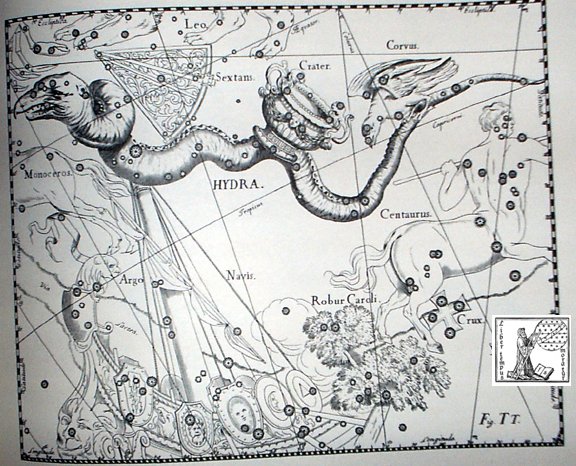
 |
Metoro said that counting (hia)
should begin at Alphard (α Hydrae) or from
Alterf (λ Leonis), and he may have suggested
number 2 as in Woman with Child:
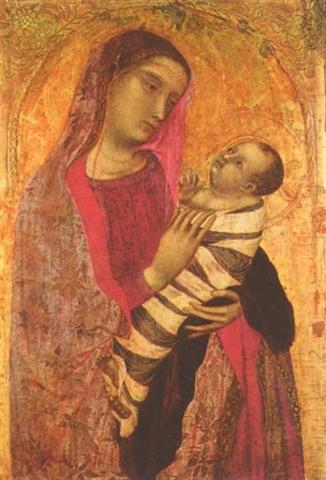
...
The poet identifies himself with the God of
the Waxing Year and his Muse with the
Goddess; the rival is his blood-brother, his
other self, his weird. All true poetry -
true by Housman's practical test [i.e. it
makes the hairs of one's chin bristle if one
repeats it silently while shaving] -
celebrates some incident or scene in this
very ancient story [the Theme], and the
three main characters are so much a part of
our racial inheritance that they not only
assert themselves in poetry but recur on
occasion of emotional stress in the form of
dreams, paranoic visions and delusions.
The weird, or rival, often appears in
nightmare as the tall, lean, dark-faced
bed-side spectre, or Prince of the Air, who
tries to drag the dreamer out through the
window, so that he looks back and sees his
body still lying rigid in bed; but he takes
countless other malevolent or diabolic or
serpent-like forms ...
It will be objected that man has as valid a
claim to divinity as woman. That is true
only in a sense; he is divine not in his
single person, but only in his twinhood. As
Osiris, the Spirit of the Waxing Year, he is
always jealous of his weird, Set, the Spirit
of the Waning Year, and vice versa; he
cannot be both of them at once except by an
intellectual effort that destroys his
humanity, and this is the fundamental defect
of the Apollonian or Jehovistic cult.
Man is demi-god: he always has either one
foot or the other in the grave; woman is
divine because she can keep both her feet
always in the same place, whether in the
sky, in the underworld, or on this earth.
Man envies her and tells himself lies about
his own completeness, and thereby makes
himself miserable; because if he is divine
she is not even a demi-goddess - she is a
mere nymph and his love for her turns to
scorn or hate.
Woman worships the male infant, not the
grown man: it is evidence of her deity, of
man's dependence on her for life. She is
passionately interested in grown men,
however, because the love-hate that Osiris
and Set feel for each other on her account
is a tribute to her divinity. She tries to
satisfy both, but can only do so by
alternate murder, and man tries to regard
this as evidence of her fundamental falsity,
not of his own irreconsolable demands on her
...

|
Egyptian
menchet |
 |
Phoenician
lamedh |
 |
Greek
lambda |
Λ
(λ) |
|
... Wikipedia has no information
regarding the origin of the
Phoenician lamedh, but
the Egyptian 'cloth' hieroglyph
(menchet) is - I suggest
- related to the 4 upside down
sky pillars. I.e. the basic
element of the 'covering'
hieroglyph could have indicated
darkness:


... Men's spirits were thought
to dwell in the Milky Way
between incarnations. This
conception has been handed down
as an Orphic and Pythagorean
tradition fitting into the frame
of the migration of the soul.
Macrobius, who has provided the
broadest report on the matter,
has it that souls ascend by way
of Capricorn, and then, in order
to be reborn, descend again
through the 'Gate of Cancer'.
Macrobius talks of signs;
the constellations rising at the
solstices in his time (and still
in ours) were Gemini and
Sagittarius: the 'Gate of
Cancer' means Gemini
...


From the year
755 (when Cancer had been at
July 11 according to the Mayas)
to AD 1842 (my assumed baseline
for the rongorongo texts) there
were around (1842 - 755) / 71 =
15 precessional days. This seems
to point to the time of the
Bull, when in JANUARY 31 the old
year would end (terminate). 192
(JULY 11) - 31 = 161 (JUNE 10):
...
Midsummer is the flowering
season of the oak, which is the
tree of endurance and triumph,
and like the ash is said to
'court the lightning flash'. Its
roots are believed to extend as
deep underground as its branches
rise in the air - Virgil
mentions this - which makes it
emblematic of a god whose law
runs both in Heaven and in the
Underworld ... The month,
which takes its name from
Juppiter the oak-god, begins on
June 10th and ends of July
7th. Midway comes St. John's
Day, June 24th, the day on which
the oak-king was sacrificially
burned alive. The Celtic year
was divided into two halves with
the second half beginning in
July, apparently after a
seven-day wake, or funeral
feast, in the oak-king's honour
...
... The Fijian barkcloth that in
the end captures the chief
represents his capture of the
land: upon installation, he is
said to hold the 'barkcloth of
the land' (masi ni vanua). The
barkcloth thus has deeper
significance. In general ritual
usage, barkcloth serves as 'the
path of the god'. Hanging from
the rafters at the rear, sacred
end of the ancient temple, it is
the avenue by which the god
descends to enter the priest ...
There is still more to the
barkcloth. The barkcloth which
provides access for the
god/chief and signifies his
sovereignity is the preeminent
feminine valuable (i yau)
in Fiji. It is the highest
product of woman's labor, and as
such a principal good of
ceremonial exchange (soolevu).
The chief's accession is
mediated by the object that
saliently signifies women
... |
Counting should also be
done, according to Metoro, from the day after the point of the
Child (ihe tamaiti), i.e. from the
day after the Southern Head of the Lion:
|
ihe tamaiti |
kotia - te
hokohuki |
kava haati |
kiore |
te hokohuki |
kua tu te rau
hei |
te moko - te
hokohuki |
 |
 |
 |
 |
 |
 |
 |
|
Cb6-5 (512) |
Cb6-6 (121) |
Cb6-7 |
Cb6-8 |
Cb6-9 (152 + 366) |
Cb6-10 |
Cb6-11 |
|
Rishu A.-13 (Head of the Lion)
ψ Leonis (146.4),
RAS ELASET AUSTRALIS = ε Leonis
(146.6)
*105.0 = *146.4 - *41.4 |
VATHORZ PRIOR =
υ
Carinae
(147.9) |
υ¹
Hydrae (148.4),
RAS ELASET BOREALIS (Northern
Head of the Lion) =
μ
Leonis
(148.7)
*107.0 = *148.4 - *41.4 |
TSEEN KE (Heaven's Record) =
φ
Velorum
(149.9) |
ν Leonis (150.1), π Leonis
(150.6) |
υ² Hydrae (151.8) |
Al Jabhah-8 (The Forehead) /
Maghā-10 (Bountiful) /
Sharru-14 (King)
10h (152.2)
AL JABHAH =
η Leonis
(152.4),
REGULUS (Little King) = α Leonis
(152.7)
*152.4 - *41.4 = *111.0 |
|
13 |
Rishu A. |
Head of the Lion |
ε (Ras Elaset Australis)
Leonis |
146.6 |
Aug 14 (226) |
|
14 |
Sharru |
King |
α (Regulus)
Leonis |
152.7 |
Aug 20 (232) |
|
15 |
Maru-sha-arkat-Sharru |
4th Son behind the King |
ρ (Shir)
Leonis |
158.9 |
Aug 26 (238) |
|
16 |
Zibbat A. |
Tail of the Lion |
β (Denebola)
Leonis
|
178.3 |
Sept 15 (258) |
|
17 |
Shēpu-arkū sha-A |
Hind Leg of the Lion |
β (Alaraph)
Virginis |
178.6 |
Sept 15 (258) |
|
18 |
Shur-mahrū-shirū |
Front or West Shur (?) |
γ (Porrima)
Virginis |
191.5 |
Sept 28 (271) |
Evidently Rishu meant
Head, a word which later may
have becom Rishi (as for
instance in the 7 stars of Ursa
Major, alias Itzam-Yeh). |
|
tu te rau hei |
ku hakahonui
raua |
kiore |
hokohuki |
te rau hei |
te moko e te
hokohuki |
 |
 |
 |
 |
 |
 |
 |
|
Cb6-12 |
Cb6-13 (520) |
Cb6-14 (155 + 366) |
Cb6-15 (130) |
Cb6-16 (392 + 131) |
Cb6-17 |
Cb6-18 |
|
λ Hydrae (153.2) |
ADHAFERA = ζ
Leonis,
TANIA BOREALIS (Northern
Gazelle) = λ Ursae Majoris,
SIMIRAM = ω Carinae
(154.7) |
ALGIEBA (The Mane) =
γ
Leonis,
q Carinae (155.5) |
TANIA AUSTRALIS (Southern
Gazelle) =
μ
Ursae Majoris
(156.0),
GHOST OF JUPITER = NGC3242
Hydrae
(156.8) |
Extended Net-26b (Ox)
μ Hydrae
(157.1) |
Maru-sha-arkat-Sharru-15 (4th
Son behind the King)
SHIR (Possessing Luminous Rays)
=
ρ
Leonis
(158.9) |
p Carinae (159.3) |
|
... From a point a little to the
west of
ζ
[Adhafera,
ζ Leonis] and not much farther
from γ - when first observed the
radiant point was in Cancer -
issue the Leonids, the
meteor stream of November 9th to
17th, its maximum now occurring
on the 13th to 14th, which about
every thirty-three years has
furnished such wonderful
displays, the last in 1866 and
the next due in 1899.
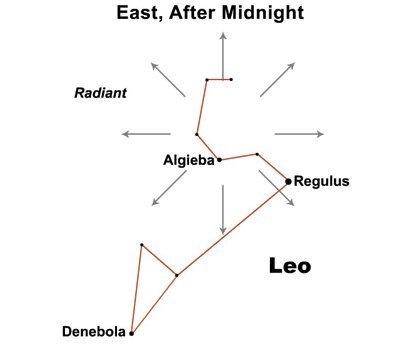
Their first
noticed appearance may have been
in the year 137, since which
date the stream has completed
fifty-two revolutions. According
to Theophanes of Byzantium, the
shower was seen from there in
November, 472; but the late
Professor Newton, our deservedly
great authority on the whole
subject of meteors, commenced
his list of the Leonids with
their appearance on the 13th of
October, 902, the Arabian Year
of the Stars, during the night
of the death of King Ibrahim ben
Ahmad, and added:
It will be seen
that all these showers are at
intervals of a third of a
century, that they are at a
fixed day of the year, and that
the day has moved steadily and
uniformly along the calendar, at
the rate of about a month in a
thousand years. (Allen)
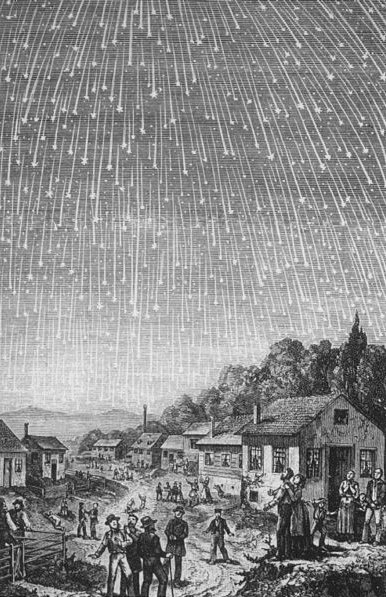 |
|
kua tupu te
mea ke |
|
Ke.
1. Other;
different; different being;
hare ké, a different house;
e-ké-ro-á... e-ké-ro-á...
there are some who... and others
who...; me'e ké,
something distinct, different:
te puaka ina oona kuhane;
me'e ké te tagata, he hakari
oona, he kuhane, an animal
has no soul; man is different,
he has a body, and a soul;
matu'a ké, the other
relatives. 2. Ké te kairua,
person who turns up for
meals at other people's homes.
3. Used in exclamations:
hahau ké! what a cool
breeze!; hana ké! how
hot! takeo ké! how cold!
Vanaga. Other, distinct,
different, diverse, otherwise;
koona ke, elsewhere;
tagata ke, some one else;
mea ke, contrary, distinct,
otherwise; hakake, feint,
stratagem, to feign; hagake,
to act contrary. T Pau.: ke,
different. Mgv.: ke,
another, other, else, different,
of partial comparative value.
Mq.: ke, é, to be
different, changed, no longer
the same. Ta.: e,
different, strange, other.
Churchill.
E, adv. and ppr.
Haw., from, away, off, by,
through, means of; also,
adverbially, something other,
something strange, new; adj.
contrary, opposed, adverse,
other, foreign. Sam.: e,
ppr. by, of; ese,
other different, strange. Ta.,
e, ppr. by,
through, from; adv. away,
off; adj. different,
strange, distant; ee,
strange. N. Zeal., ke,
strange, different. Malg.,
eze, of, by.
Greek,
έκ, έξ, from out
of, from, by, of; έκει,
in that place, opp. to
ένθαδε,
in some other place than that of
the speaker, thither;
έκας,
afar off. Lat., e, ex,
out of, from. Liddell and Scott
(Gr.-Engl. Dict., s. v.) say:
'The root of έτ-ερος is
said to be the same as Sanskr.
ant-aras, Goth.
auth-ar, Germ. and-er,
Lat. alt-er, aut, French
aut-rui, our eith-er,
oth-er, itara =
alius, also in Sanskrit.'
Whatever the root of ant-aras,
auth-ar, alter, it
seems to me that
έκας
shows nearer kindred to the
Polynesian e, ke,
ee, ese, eze,
than to forms so developed as
ant-ar, ant-ara, &c.
(Fornander) |
 |
 |
 |
|
Cb6-19 (526) |
Cb6-20 (135 = 500 - 365) |
Cb6-21 (2 * 264 = 22 * 24) |
|
φ Hydrae (160.3) |
no star listed (161
= 249 - 88) |
VATHORZ POSTERIOR = θ Carinae
(162.1),
PEREGRINI = μ Velorum,
η Carinae
(162.6) |
|
... This [η
Carinae] is one of the most
noted objects in the heavens,
perhaps even so in almost
prehistoric times, for
Babylonian inscriptions seem to
refer to a star noticeable from
occasional faintness in its
light, that Jensen thinks was
η. And he claims it
as one of the temple stars
associated with Ea, or Ia, of
Eridhu¹, the Lord of Waters,
otherwise known as Oannes², the
mysterious human fish and
greatest god of the kingdom.
¹ Eridhu, or Eri-duga, the Holy
City, Nunki, or Nunpe, one of
the oldest cities in the world,
even in ancient Babylonia, was
that kingdom's flourishing port
on the Persian Gulf, but, by the
encroachment of the delta, its
site is now one hundred miles
inland. In its vicinity the
Babylonians located their sacred
Tree of Life.
² Berōssōs described Oannes as
the teacher of early man in all
knowledge; and in mythology he
was even the creator of man and
the father of Tammuz and Ishtar,
themselves associated with other
stars and sky figures. Jensen
thinks Oannes connected with the
stars of Capricorn; Lockyer
finds his counterpart in the god
Chnemu of Southern Egypt; and
some have regarded him as the
prototype of Noah
...
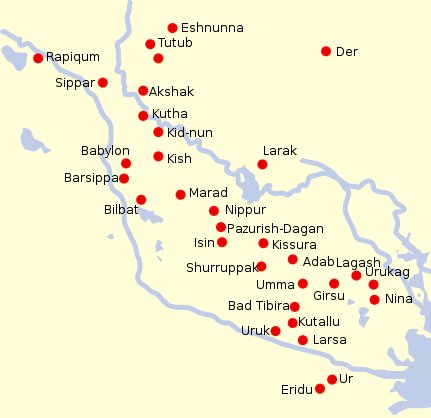 |
.jpg)
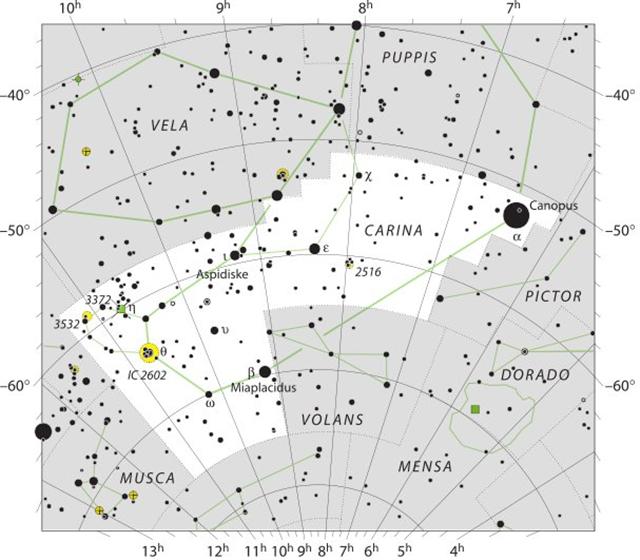 |
|
... The Pythagoreans make
Phaeton fall into Eridanus,
burning part of its water, and
glowing still at the time when
the Argonauts passed by. Ovid
stated that since the fall the
Nile hides its sources. Rigveda
9.73.3 says that the Great
Varuna has hidden the ocean. The
Mahabharata tells in its own
style why the 'heavenly Ganga'
had to be brought down. At the
end of the Golden Age (Krita
Yuga) a class of Asura
who had fought against the
'gods' hid themselves in the
ocean where the gods could not
reach them, and planned to
overthrow the government. So the
gods implored Agastya
(Canopus, alpha Carinae = Eridu)
for help. The great Rishi did as
he was bidden, drank up the
water of the ocean, and thus
laid bare the enemies, who were
then slain by the gods. But now,
there was no ocean anymore!
Implored by the gods to fill the
sea again, the Holy One replied:
'That water in sooth hath been
digested by me. Some other
expedient, therefore, must be
thought of by you, if ye desire
to make endeavour to fill the
ocean ...
... Canopy ... covering
over a throne, etc. XIV (Wycl.).
Late ME. canope,
canape - medL. canopeum
baldacchino, for L. cōnōpēum,
-eum, -ium net
over a bed, pavilion - Gr.
kōnōpeîon Egyptian bed with
mosquito curtains, f. kōnōps
gnat, mosquito ...
 |
This exceptional place
surely ought to have motivated a special
kind of koti to count from (hia):
|
kotia hia |
te kava tu |
kiore |
tu te ika |
te moko e te
hokohuki |
 |
 |
 |
 |
 |
|
Cb6-22 (137 = 529 - 392) |
Cb6-23 (615 - 85) |
Cb6-24 (223 - 84) |
Cb6-25 → 150 |
Cb6-26 |
|
ν Hydrae (163.1) |
no star listed (164 = 249 - 85)
ALTAIR (α Aquilae)
|
Wings-27 (Snake)
η
Octans (165.4),
ALKES (Shallow Basin) =
α
Crateris
(165.6)
*124.0 = *165.4 - *41.4 |
ANA-TIPU-4 (Upper-side-pillar -
where the guards stood)
MERAK (Loin) = β Ursae Majoris
(166.2),
DUBHE (Bear) = α Ursae Majoris
(166.7) |
11h (167.4)
χ Leonis, χ¹ Hydrae (167.1), χ²
Hydrae (167.3) |
|
... Indeed, at the rituals of
the installation, the chief is
invested with the 'rule' or
'authority' (lewaa) over
the land, but the land itself is
not conveyed to him. The soil (qele)
is specifically identified with
the indigenous 'owners' (i
taukei), a bond that cannot
be abrogated. Hence the
widespread assertion that
traditionally (or before the
Lands Commission) the chiefly
clan was landless, except for
what it had received in
provisional title from the
native owners, i.e., as marriage
portion from the original people
or by bequest as their sister's
son ... The ruling chief has no
corner on the means of
production. Accordingly, he
cannot compel his native
subjects to servile tasks, such
as providing or cooking his
daily food, which are
obligations rather of his own
household, his own line, or of
conquered people (nona tamata
ga, qali kaisi sara). Yet
even more dramatic conditions
are imposed on the sovereignity
at the time of the ruler's
accession. Hocart observes that
the Fijian chief is ritually
reborn on this occasion; that
is, as a domestic god. If so,
someone must have killed him as
a dangerous outsider. He is
indeed killed by the indigenous
people at the very moment of his
consecration, by the offering of
kava that conveys the
land to his authority (lewaa).
Grown from the leprous body of a
sacrificed child of the native
people, the kava the
chief drinks poisons him ...
Sacred product of the people's
agriculture, the installation
kava is brought forth in
Lau by a representative of
the native owners (mataqali
Taqalevu), who proceeds
to separate the main root in no
ordinary way but by the violent
thrusts of a sharp implement
(probably, in the old time, a
spear). Thus killed, the root
(child of the land) is then
passed to young men (warriors)
of royal descent who, under the
direction of a priest of the
land, prepare and serve the
ruler's cup ... the tuu
yaqona or cupbearer on this
occasion should be a vasu i
taukei e loma ni koro,
'sister´s son of the native
owners in the center of the
village'... Traditionally,
remark, the kava root was
chewed to make the infusion: The
sacrificed child of the people
is cannibalized by the young
chiefs. The water of the kava,
however, has a different
symbolic provenance. The classic
Cakaudrove kava
chant, performed at the Lau
installation rites, refers to it
as sacred rain water from the
heavens ... This male and
chiefly water (semen) in the
womb of a kava bowl whose
feet are called 'breasts' (sucu),
and from the front of which,
tied to the upper part of an
inverted triangle, a sacred cord
stretches out toward the chief
... The cord is decorated with
small white cowries, not only a
sign of chieftainship but by
name, buli leka, a
continuation of the metaphor of
birth - buli, 'to form',
refers in Fijian procreation
theory to the conceptual
acception of the male in the
body of the woman. The
sacrificed child of the people
will thus give birth to the
chief. But only after the chief,
ferocious outside cannibal who
consumes the cannibalized
victim, has himself been
sacrificed by it. For when the
ruler drinks the sacred
offering, he is in the state of
intoxication Fijians call 'dead
from' (mateni) or 'dead
from kava' (mate ni
yaqona), to recover from
which is explicitly 'to live' (bula). This
accounts for the second cup the
chief is alone accorded, the cup
of fresh water. The god is
immediately revived, brought
again to life - in a transformed
state ...
.jpg) |
|
kua tupu te
kihikihi |
ku kikiu |
te henua |
|
Kikiu.
Kikiu. 1. Said of food
insufficiently cooked and therefore
tough: kai kikiu. 2. To tie
securely; to tighten the knots of a
snare: ku-kikiu-á te hereíga,
the knot has been tightened. 3.
Figuratively: mean, tight, stingy;
puoko kikiu. a miser; also:
eve kikiu. 4. To squeak (of
rats, chickens). Kiukiu, to
chirp (of chicks and birds); to make
short noises. The first bells
brought by the missionaries were
given this name. Vanaga. Kiukiu
(kikiu). 1. To resound, to
ring, sonorous, bell, bronze;
kiukiu rikiriki, hand bell;
tagi kiukiu, sound of a bell;
kikiu, to ring, the squeeking of
rats; tariga kikiu, din,
buzzing; hakakiukiu, to ring.
Mgv.: kiukiu, a thin sound, a
soft sweet sound. 2. To disobey,
disobedience; mogugu kiukiu,
ungrateful; ka kikiu ro, to
importune. Churchill. |
 |
 |
 |
|
Cb6-27 |
Cb6-28 (223 - 80) |
Cb6-29 (536) |
|
AL SHARAS (The Ribs)
=
β
Crateris
(168.6) |
Al Zubrah-9 (The Mane) /
Purva Phalguni-11 (First Reddish
One)
ZOSMA (Girdle) =
δ
Leonis
(169.2),
COXA (Hips) =
θ
Leonis
(169.4)
*128 = *169.4 - *41.4 |
φ
Leonis (170.0),
ALULA
(First Spring of the Gazelle) =
ξ,
ν
Ursae Majoris
(170.5),
LABRUM =
δ
Crateris
(170.6) |
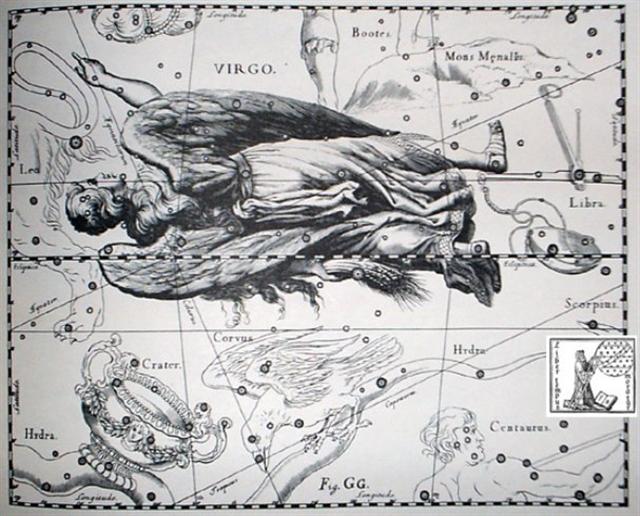
|
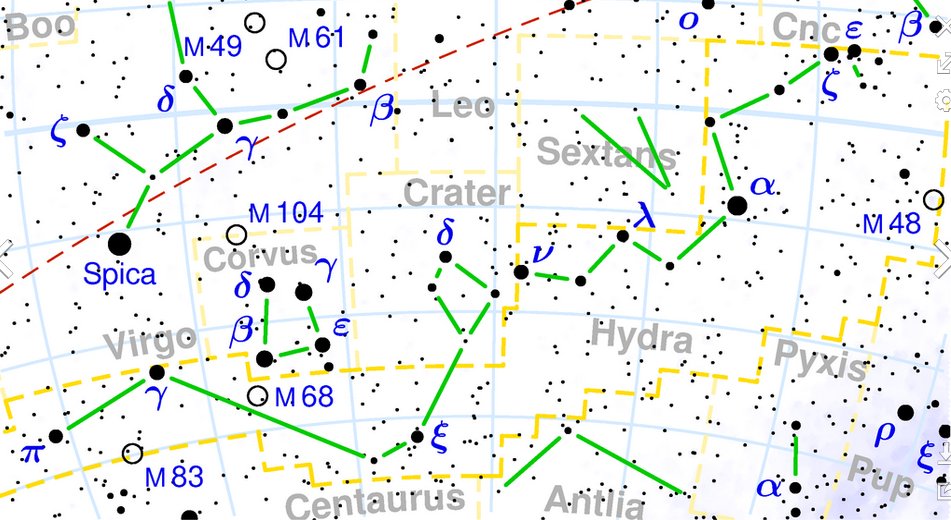





















.jpg)




.jpg)


